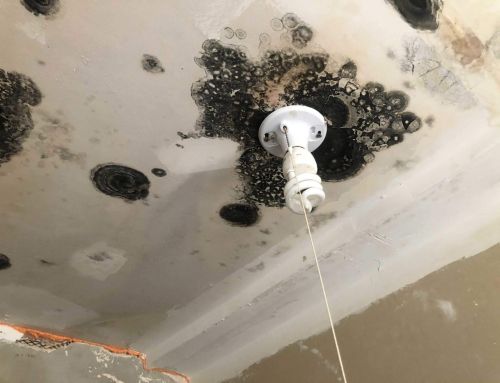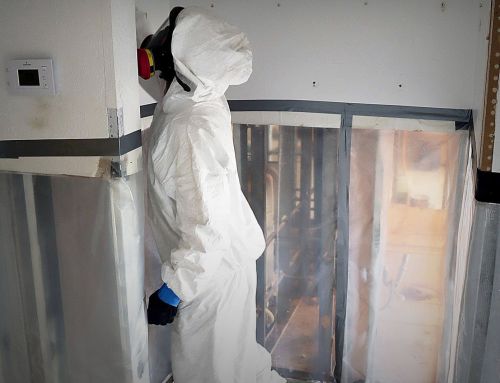It’s certainly no secret that mold likes warm, wet spaces. If you give mold enough moisture and heat, it will flourish. Unfortunately, there’s no warmer, wetter space in your Lake Zurich, Illinois home than your bathroom. If you’ve got mold-covered shower tiles and grout, mold growing on your bathroom window, or suspicious growths behind or at the base of your toilet, you’re certainly not alone. However, although mold is a common problem in bathrooms, it’s hardly an acceptable one. Just as it will in other areas of your home, mold in your bathroom will compromise your indoor air quality (IAQ) and diminish your health.
How Mold Forms in Bathrooms
All bathrooms are designed to have a regular and reliable form of ventilation. For instance, most bathrooms have windows that can be opened to let excess moisture flow out and to let fresh, outdoor air flow in. If no window is present in your bathroom, you likely have an overhead vent fan instead. Without these features, bathrooms would become too damp to enjoy. Excess moisture would cause the paint to peel off their walls and building materials to warp and buckle. It would also create the ideal environment for mold formation.
When mold grows in bathrooms, it’s often because ventilation is compromised. If a window is the sole source of your bathroom ventilation, it should be regularly opened to let this space dry out. This window should be cracked whenever hot showers are running or whenever you draw a steamy bath.
If you have a vent fan in your bathroom instead of a window, you should take its cover off at regular intervals to clean it. When vent fans accumulate lots of lint, dust, or other debris, they can’t draw hot, humid out of the room. Moreover, bathroom fans should always be turned on when these spaces are in use. Using these features consistently is key to keeping your bathrooms mold-free.
Bathrooms are veritable breeding grounds for other germs. They’re also home to other airborne contaminants. Bacteria, viruses, dust, and other particulates float around in the air, settle on bathroom surfaces, and feed mold.
Why Surface Disinfectants Won’t Do the Trick
The obvious solution to bathroom mold and the most popular preventative measure is to spray and scour all surfaces with bleach, bleaching agents, or other antimicrobial cleaning solutions. However, although products like chlorine bleach are advertised as being able to kill mold on contact, they only work on hard, non-porous surfaces. Porous surfaces allow mold to settle in. On any porous surface, mold will form deep networks of roots known as hyphae and mycelium. Although bleach will whiten a mold-covered surface, it will leave these networks of mold roots both intact and thriving.
Bathrooms are filled with porous surfaces. For instance, you can bleach your shower and floor tiles, but you cannot bleach the grout that lies between these tiles and kill the mold that lives within it. In a wet, warm bathroom, mold spores will find their way into body loofahs, damp rags and towels, bath mats and rugs, window curtains and shower curtains, and more.
The Never-ending Battle With Bathroom Mold
Mold’s ability to establish deep networks of roots within porous surfaces creates a never-ending battle. Homeowners who are especially diligent in removing visible mold are constantly spraying chemical solutions. Unfortunately, just as mold can irritate the respiratory system, caustic chemicals like chlorine bleach can wreak havoc on the airways too. When the goal is to improve your indoor air quality and protect your health, regularly using only partially effective surface cleaners is a bad idea.
The biggest drawback of using chlorine bleach or other products to treat mold is the fact that these solutions can make mold more robust. Although the problem might appear to have been dealt with, mycelium and hyphae will have the opportunity to spread undetected. Within a very short period of time, not only will the treated mold return, but it will have moved to other areas of the room.
Effective Strategies for Preventing Bathroom Mold
Treating bathroom mold with chlorine bleach is guaranteed to prove ineffective. Chlorine bleach offers short-term results at best. As with all other household issues, the best form of treatment is prevention. In addition to keeping your bathrooms well-ventilated, you should:
- Dry all surfaces after baths and showers
- Let fresh air circulate throughout these spaces for long stretches of time
- Identify slow or hidden leaks and repair them
- Remove food sources for mold by regularly cleaning up dust and other organic materials
- Paint your bathroom with mold-resistant paint
- Keep tile grout sealed
Eliminating excess humidity from your bathroom is the most important part of this process. Bathrooms that have a persistently damp, muggy feel are especially mold-prone.
Treating Bathroom Mold
Given the challenges that bathroom mold presents, it’s important to have it treated by a licensed professional. There are simply too many factors to account for in these environments. In addition to the deep networks of mold roots that are found in porous bathroom surfaces, there are also a number of damp, porous items that are regularly kept in these spaces.
Professionals start their mold treatments by first identifying the source of the problem. After all, it makes absolutely no sense to eliminate mold if the conditions remain ripe for mold to make an immediate return. This includes fixing leaky fixtures, repairing under-sink leaks, properly sealing bathtubs and shower pans, and replacing saturated, sagging building materials. An overflowed bathtub or a leaky shower pan can leave you with soft, mold-covered drywall, warped baseboards, and countless other issues. Until these building materials are properly treated or removed, mold will always have a place to thrive.
What to Look for in a Bathroom Mold Treatment
All effective treatments for bathroom mold:
- Identify and resolve the underlying cause of mold development
- Address the unique challenges of porous surfaces
- Improve air quality and bathroom aesthetics
- Prevent mold from returning
More importantly, unlike chlorine bleach and many other common cleaning solutions, professional treatments don’t introduce harmful, chemical contaminants into the living environment. When a mold treatment is effective, you shouldn’t have to continue disbursing hazardous cleaners throughout your home. Instead, you should be able to maintain clean, safe, and pleasant-to-use bathrooms by simply keeping these rooms tidy, dry, and well-ventilated.
What Will Happen If You Don’t Treat Bathroom Mold?
Mold-covered bathrooms have an unpleasant feel and an equally unpleasant smell. They aren’t fun to use, and they certainly aren’t safe for use either. Maintaining the conditions that allow mold to thrive increases the likelihood of slip and fall accidents even as it sets the stage for major building damage. Mold can undermine the integrity of all porous building materials. It can cause tile grout to discolor and flake away, leave your walls and baseboards warped and misshapen, and coat your toilets and other fixtures in grime that makes them repulsive to touch. Treating mold anywhere in your home is important for protecting the value and marketability of your investment and for ensuring resident health.
At Pur360, we provide proven ultraviolet sanitization and odor removal services. We make it easy for residents of Lake Zurich, Illinois to enjoy clean, safe, and mold-free bathrooms in their homes. We also offer drywall removal and repairs, carpet removal, and attic stain removal. If you’ve got mold problems, we’ve got answers. Give us a call today to set up an appointment.



